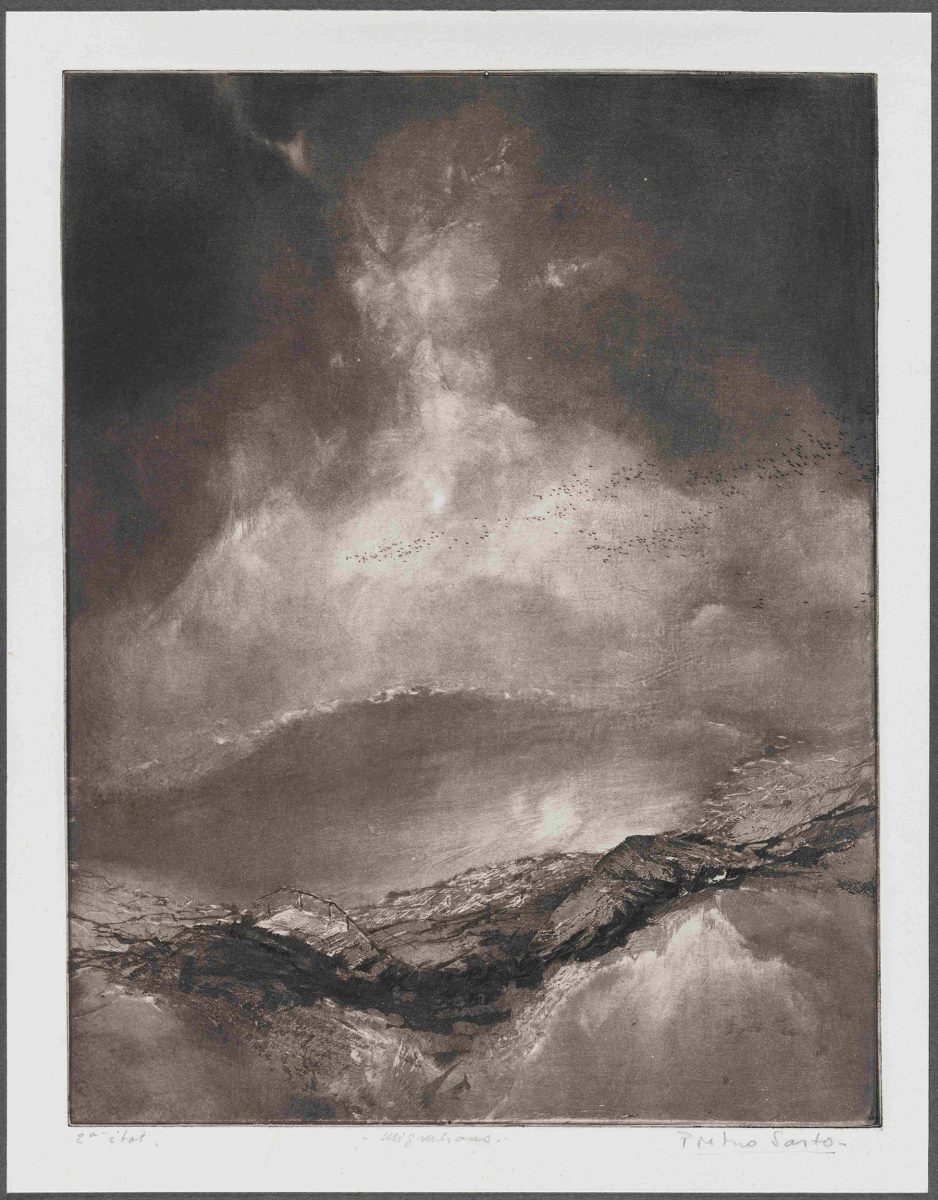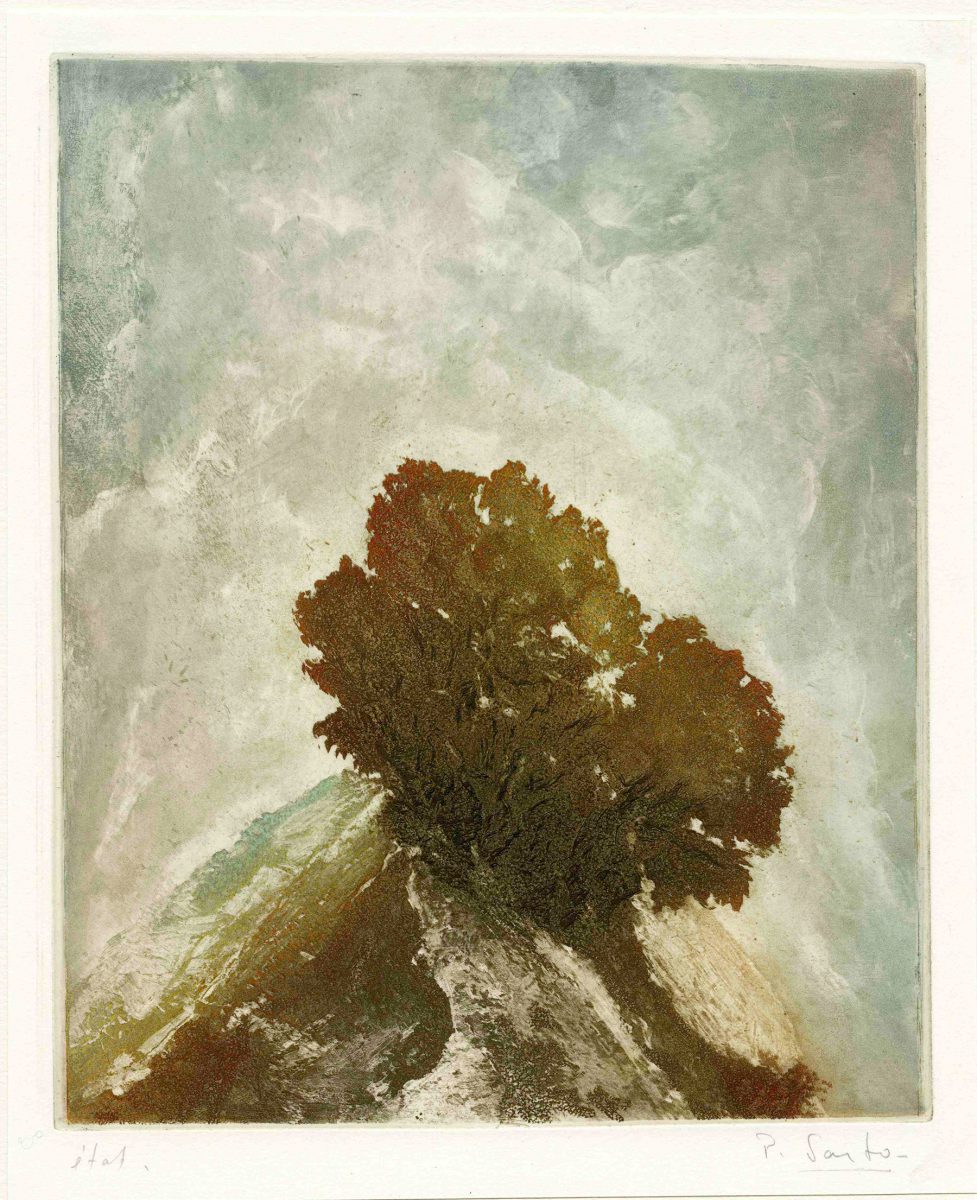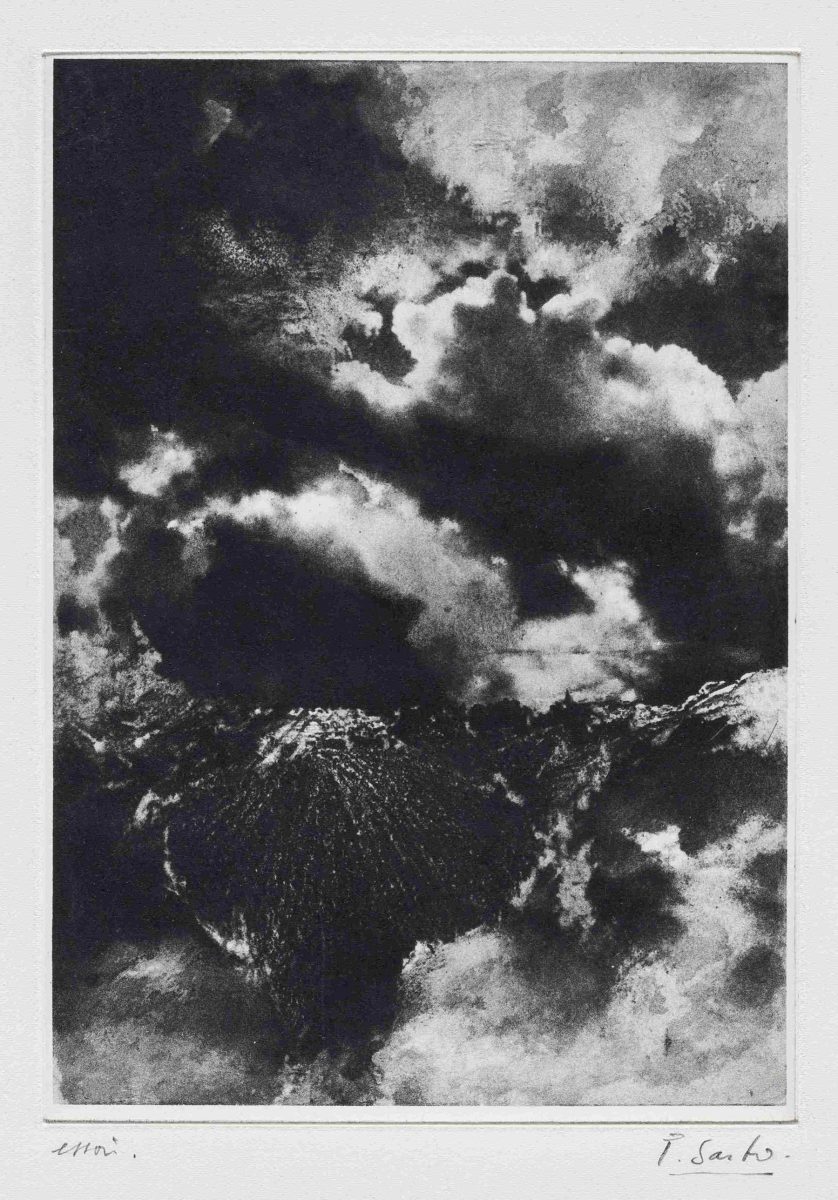The collection of the Fondation William Cuendet & Atelier de Saint-Prex includes more than 450 prints by the painter and printmaker Pietro Sarto, leader of the Atelier de Saint-Prex and co-founder of the Fondation. A tireless artist, researcher, and historian of prints, as well as an impenitent reader and a fine politician, Sarto was behind countless important initiatives in Switzerland’s publishing and exhibition worlds. He also encouraged many of his country's art lovers to take an interest in printmaking. Alongside the proofs and essays by Sarto that have entered the Fondation’s collection through legal deposit, the collection has also welcomed many of his drawings, paintings and artist's books, thanks to donations from André Desponds and Isabelle and Jacques Treyvaud.
Born in 1930 in Chiasso, Pietro Sarto (born Schneider) grew up in Ticino before moving with his family to French-speaking Switzerland at the start of the Second World War. Having been expelled from the École de Commerce and then from the École des Beaux-Arts, Sarto did not follow the traditional path, but he was insatiably curious and devotedly pursued his art. After a number of decisive encounters (such as with artists Marcel Poncet and Albert-Edgar Yersin), he made frequent trips to Paris before settling there at the end of the 1940s. During his years in Paris, he was profoundly influenced by the teaching he received from the printmaker Albert Flocon, as well as by the lectures he heard from the philosopher Gaston Bachelard. Returning to Switzerland in 1959, he set up the Presses artistiques printmaking workshop in Pully on behalf of publisher Pierre Cailler. Playing an active role in the world of printmaking in French-speaking Switzerland, Sarto helped found the group L'Épreuve (in 1962), with which he collaborated on numerous exhibitions. His meticulous exploration of printmaking techniques soon led him to set up his own studio, first in Villette, then in Saint-Prex in 1971. The Atelier de Saint-Prex, where Swiss and foreign artists collaborated, proved to be a hotbed of technical experimentation and creative output. The decades that followed were marked by numerous solo exhibitions for Sarto, as well as exhibitions organized in connection with the collection of the Fondation William Cuendet & Atelier de Saint-Prex.
Pietro Sarto does not define himself as a printmaker, but rather as a painter-printmaker, insisting on the interpenetration of the two mediums, as well as their mutual enrichment. That interpenetration has been evidenced not only by his gradual adoption of colour in his etchings, but also by his use of aquatint, a variant of etching with characteristics similar to painting. It is above all in Sarto’s landscapes, particularly his views of the Lake Geneva basin, that this confluence of ideas and processes is most evident.




